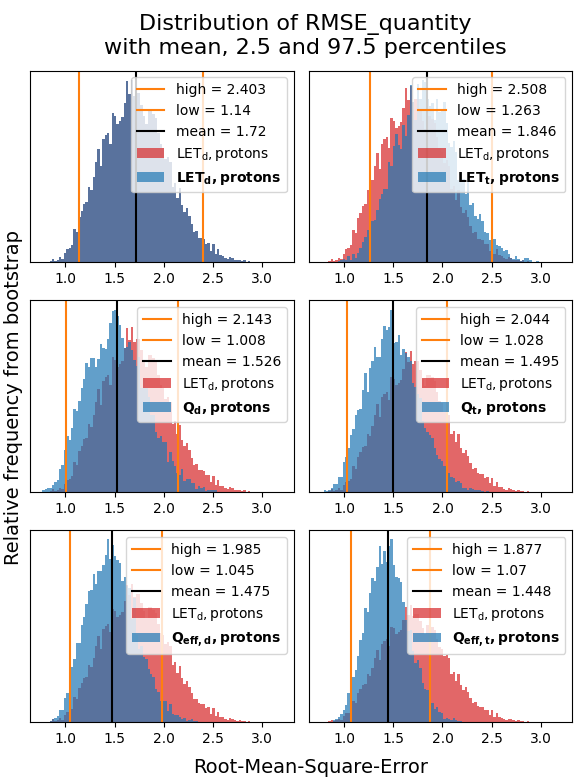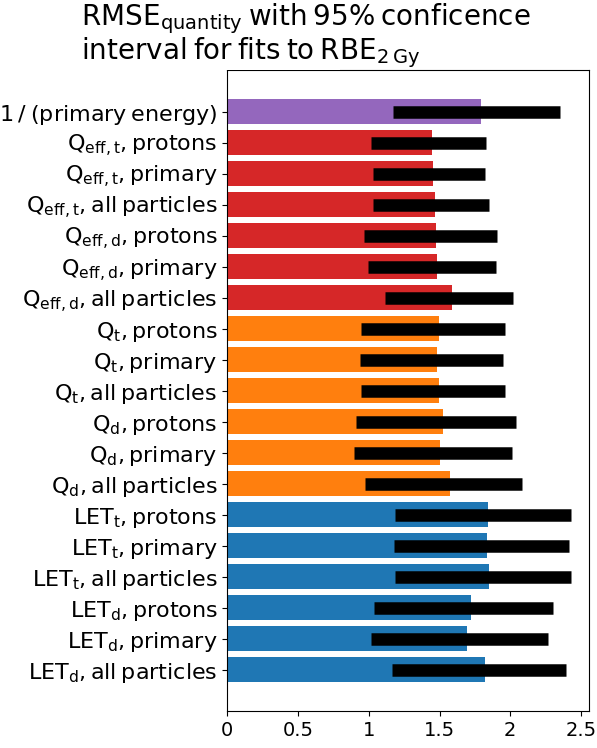Dose-averaged LET may not be the best RBE-descriptor for proton therapy
PO-1724
Abstract
Dose-averaged LET may not be the best RBE-descriptor for proton therapy
Authors: Fredrik Kalholm1,2, Iuliana Toma-Dasu3,2, Leszek Grzanka4, Niels Bassler5,6,7
1Stockholm University, Medical Physics, Stockholm, Sweden; 2Karolinska Institute, Department of Oncology and Pathology, Medical Radiation Physics, Stockholm, Sweden; 3Stockholm University, Mecical Physics, Stockholm, Sweden; 4Polish Academy of Sciences, Institute of Nuclear Physics, Krakow, Poland; 5Aarhus University Hospital, Department of Experimental Clinical Oncology, Aarhus, Denmark; 6Aarhus University Hospital, Danish Centre for Particle Therapy, Aarhus, Denmark; 7Aarhus University, Department of Clinical Medicine, Aarhus, Denmark
Show Affiliations
Hide Affiliations
Purpose or Objective
A clinical relative biological effectiveness (RBE) of 1.1 has been broadly used for proton therapy. Variable RBE models have however been proposed due to strong in vitro evidence and as unexpected toxicities have been observed by the end of the proton tracks. The input variable for these models has typically been dose averaged linear energy transfer (LETd), but the way the LETd was defined or calculated is usually not consistent, which may impact the corresponding RBE value. Some other quantities have, however, been suggested to better predict RBE using arguments from track structure theory. This study investigates these alternative quantities as input variables for a phenomenological RBE model and compares them with LETd with respect to their suitability as RBE predictors for proton radiotherapy.
Material and Methods
The SHIELD-HIT12A Monte Carlo particle transport code is used to simulate experimental setups of in vitro cell survival experiments for proton RBE determination. The inverse of average primary energy as well as track- and dose averaged versions of LET, Q [doi: 10.1080/0284186X.2017.1356468] and z*²/β² (here called Qeff) are scored including various secondary particles. These are then used as input variables for a phenomenological RBE model. The Bayesian information criterion (BIC) is utilized to determine the best polynomial degree for relationship between the beam quality quantities and the ratios of the parameters describing the response to protons and photons assuming the LQ model for cell survival, α/αₓ and β/βₓ. The goodness of fit is analyzed using a bootstrapping approach.
Results
A cubic fit for α/αₓ and a quadratic fit for β/βₓ were chosen by the BIC-score. Track averaged Qeff including all protons rendered the overall best fit, with a relative RMSE for RBE2 Gy of 1.45 ± 0.43 (2σ). Generally, Qeff outperforms Q, which in turn outperforms LET while the averaging modality (dose or track) and the particles included in the scoring (all, protons or only primaries) have a minor impact on the result as illustrated in Figures 1 and 2 . LETd, however, regardless of the way it is assessed, is still within the 95% confidence interval from the quantity with the best fit.
Conclusion
While no alternative quantity to LETd could be identified as superior with statistical certainty the results of this study indicate that Qeff outperforms LET, which together with its medium-, and density independence could possibly make it a more suitable quantity to use for RBE calculations. However, as the various beam quality quantities are highly correlated, more experimental data with smaller statistical uncertainties are needed to determine the best input parameter for phenomenological RBE models for protons.

Figure 1: Distribution of RMSE´s for RBE2 Gy from 10000 bootstrapped samples for all quantities including all protons.

Figure 2: Mean-, and 95% confidence interval for RBE2 Gy for all quantities investigated.